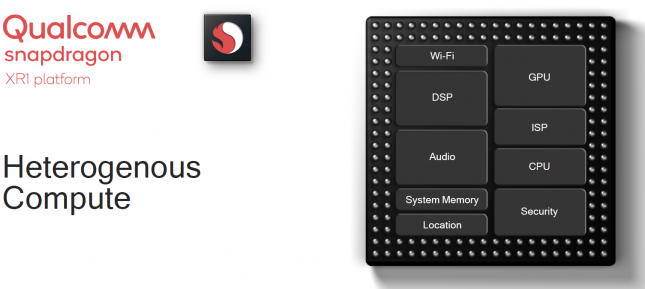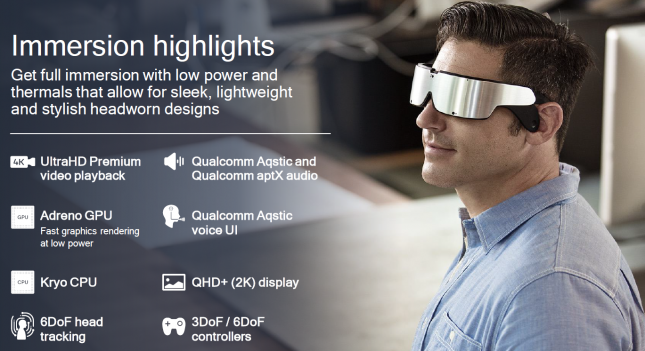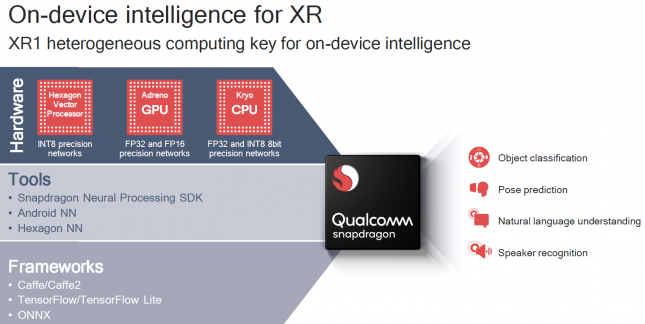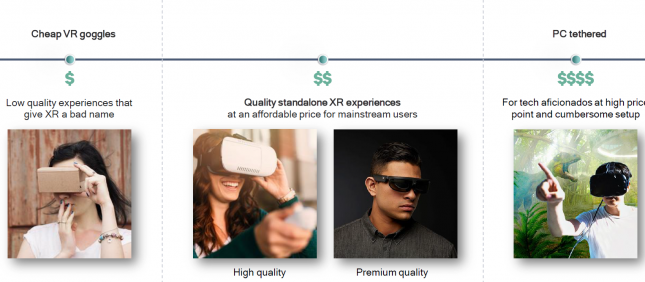Snapdragon XR1 – Qualcomm Creates Dedicated SoC For XR
Qualcomm has positioned themselves to be a key player in the mobile VR space and it looks like they are doing things right. Almost every single standalone VR headset today is powered by a Qualcomm Snapdragon SoC. Qualcomm doesn’t appear to be lifting off the gas as they are announcing the worlds first dedicated Extended Reality (XR) platform, Qualcomm Snapdragon XR1, ahead of the Augmented World Expo in Santa Clara. Qualcomm believes that XR is going to be the next mobile computing platform. What is XR? Qualcomm believes that extended reality (XR) is the next big thing and it’s basically an umbrella term that encompasses augmented reality (AR), virtual reality (VR) and mixed reality (MR). 
The Qualcomm Snapdragon XR1 platform is the first dedicated XR platform and boasts a heterogeneous compute architecture, an AI engine, support for 4K video playback at up to 60 frames per second, and support for 3DoF as well as 6DoF head tracking and controller capabilities. At the highest level, the SoC used in the XR1 platform features an ARM-based multi-core Central Processing Unit (CPU), vector processor, Graphics Processing Unit (GPU) and Qualcomm AI Engine. If you are familiar with Qualcomm Snapdragon terminology that means it includes the Kryo CPU block, an Adreno GPU block, a Spectra ISP block, a Hexagon DSP block and so on.
Qualcomm isn’t disclosing and specifics about clock speeds or just how powerful this SoC is, but they did mention that it sits below premium XR (i.e. Snapdragon 845 Mobile VR platform) in an area that Qualcomm is calling a High-quality XR experience space. From the sounds of it, this space would be something along the lines of the Oculus Go all-in-one virtual reality headset. Qualcomm isn’t saying what SoC this is based on either as there were so many design tweaks to the GPU, CPU, Memory Bandwidth, ISP etc. that it really does it an injustice to say it is based off a current design.
Other key features include an advanced XR software service layer, machine learning, the Snapdragon XR Software Development Kit (SDK) and Qualcomm Technologies connectivity and security technologies. Basically, the Snapdragon XR1 has everything manufacturers need to build next-gen AR and VR devices.
It feels like Qualcomm is positioning the XR1 to drive headsets up handle up to 4K resolutions and that is a great sign. The $199 Oculus Go has a 2,560 x 1,440 resolution, so it looks like the XR1 is going to bring more performance to affordable standalone devices.
The picture below is of Hugo Swart, Senior Director, Product Management and business lead for the Home Entertainment business within the Internet of Things (IoT) group at Qualcomm, holding the new XR1 SoC!
Qualcomm said that Meta, Vuzix, Pico and HTC are all working on future products based on the Snapdragon XR1 platform and we can expect some of them to come out this year! The Qualcomm Snapdragon XR1 platform is exciting and we can’t wait to see all the XR products that come to market because of it.





